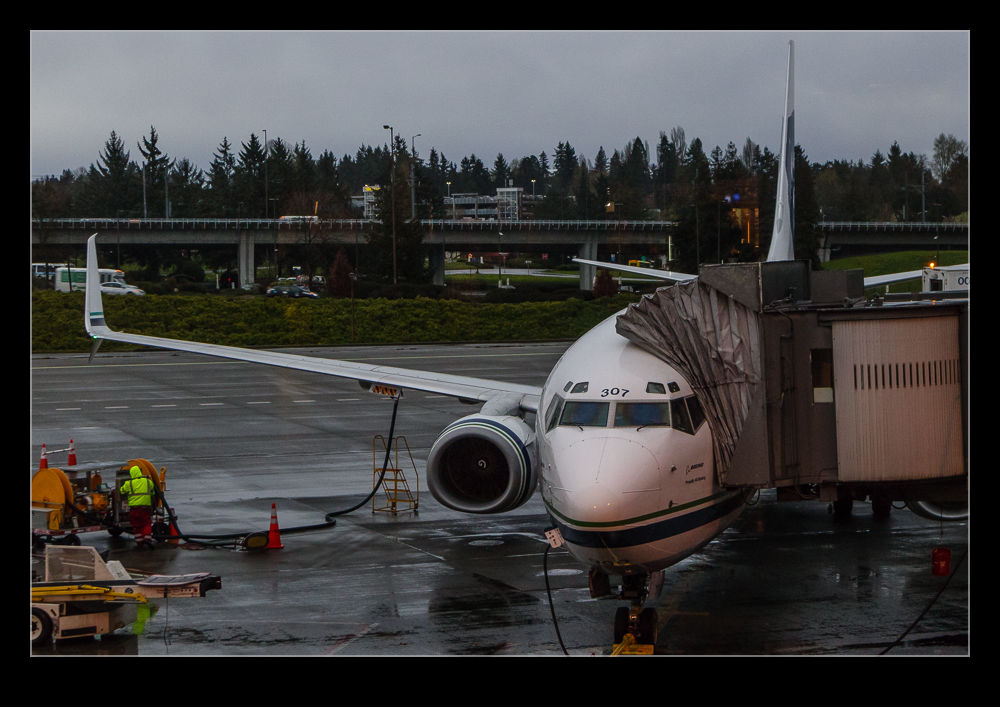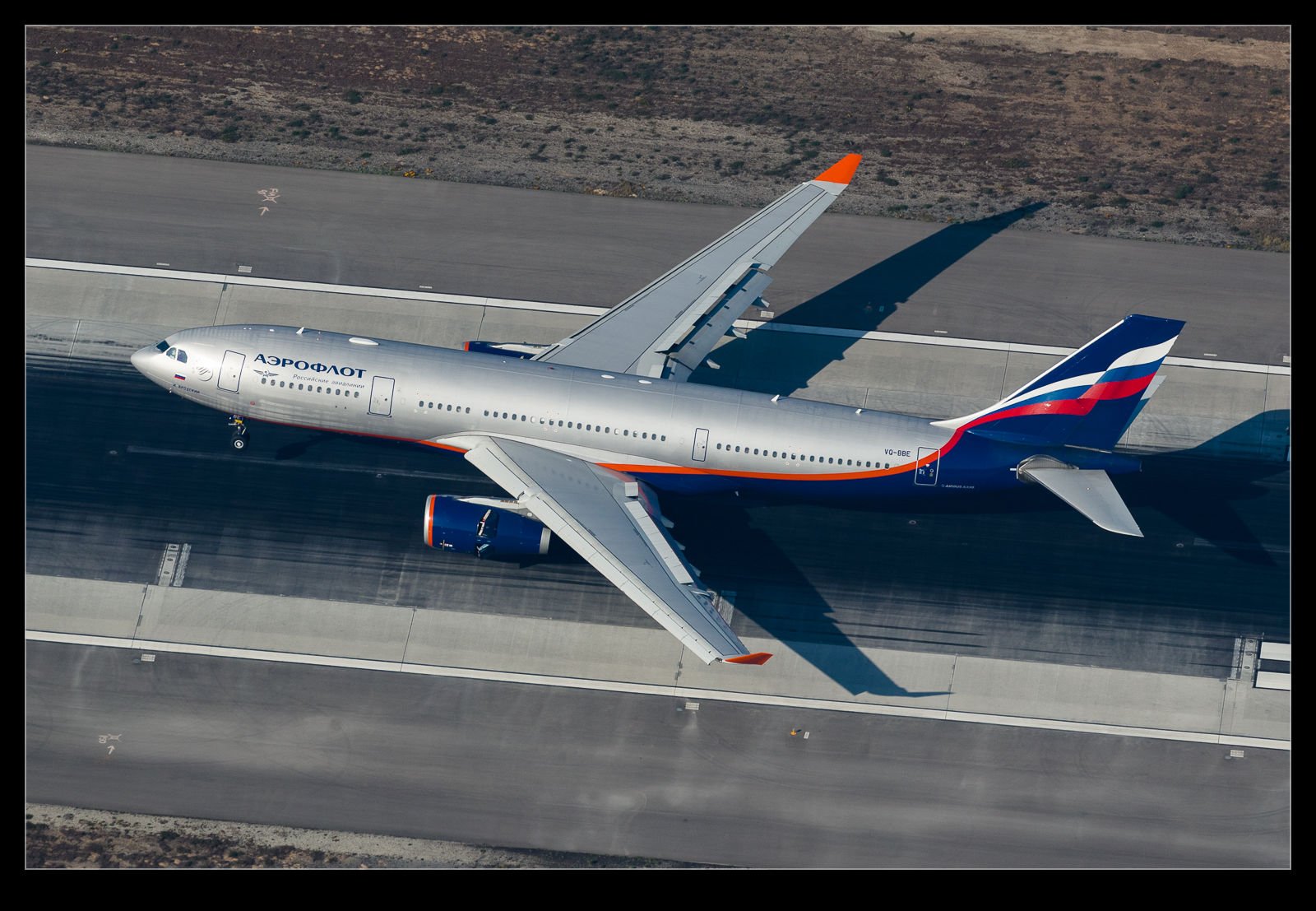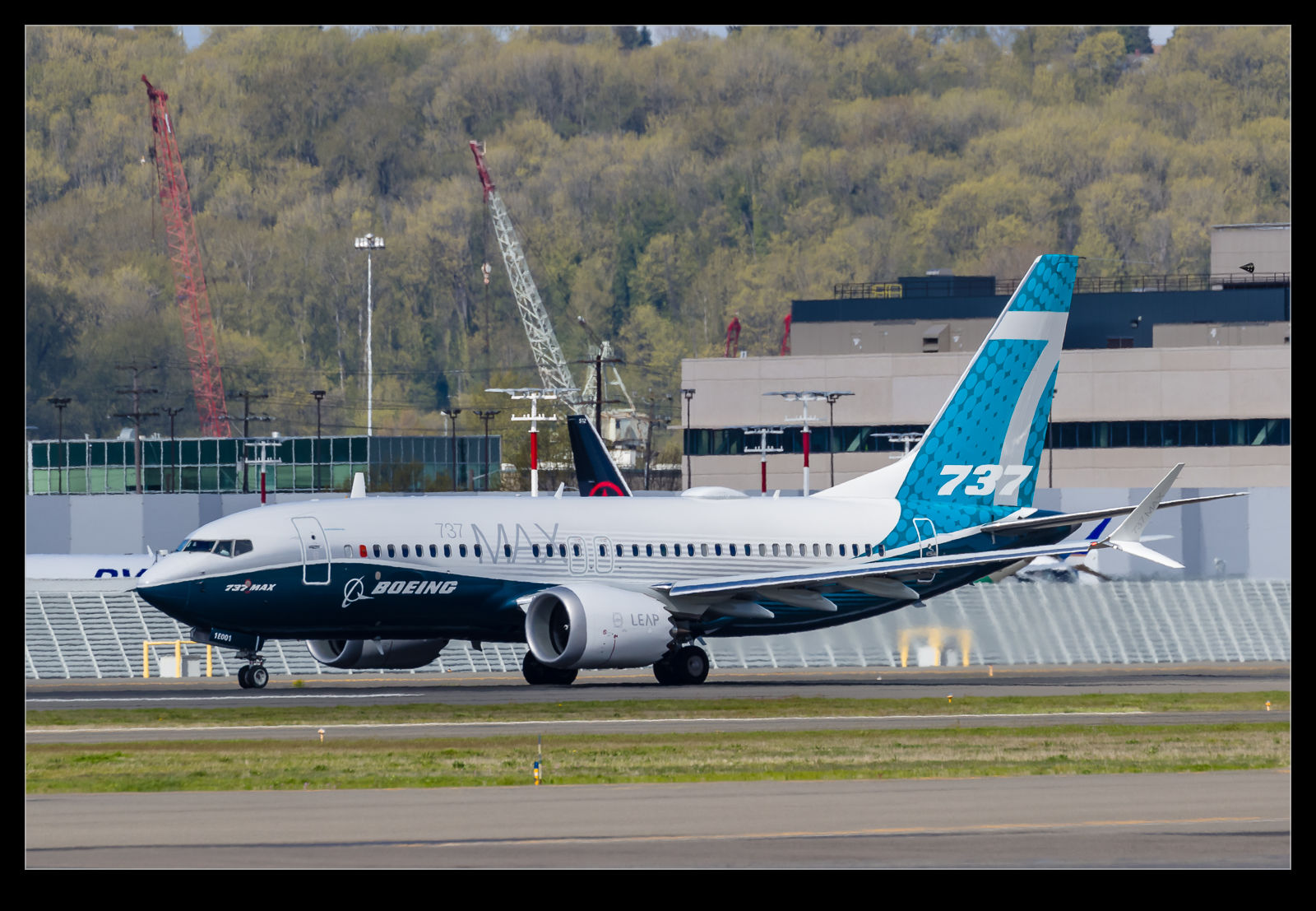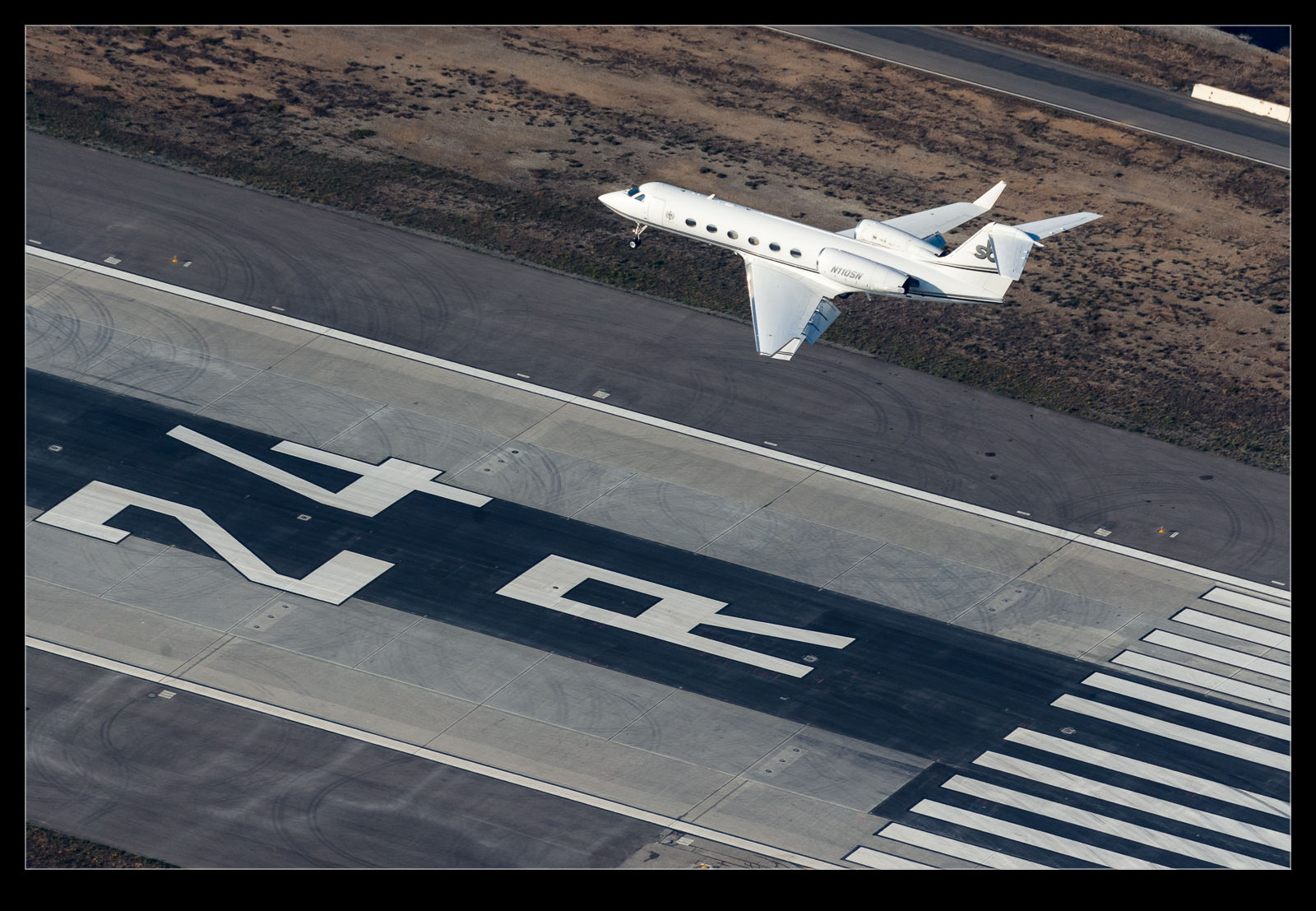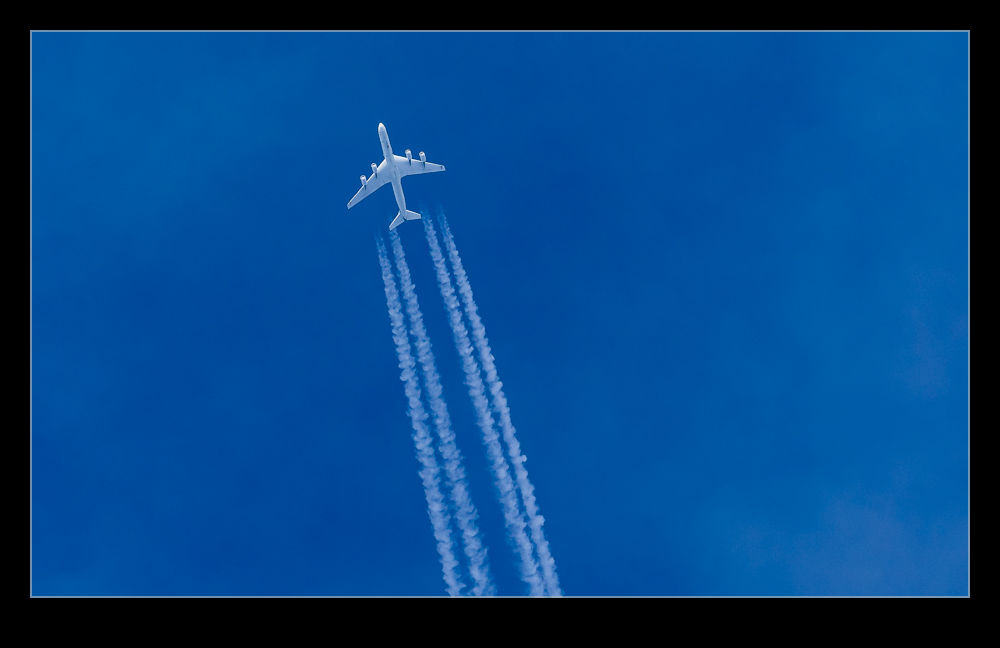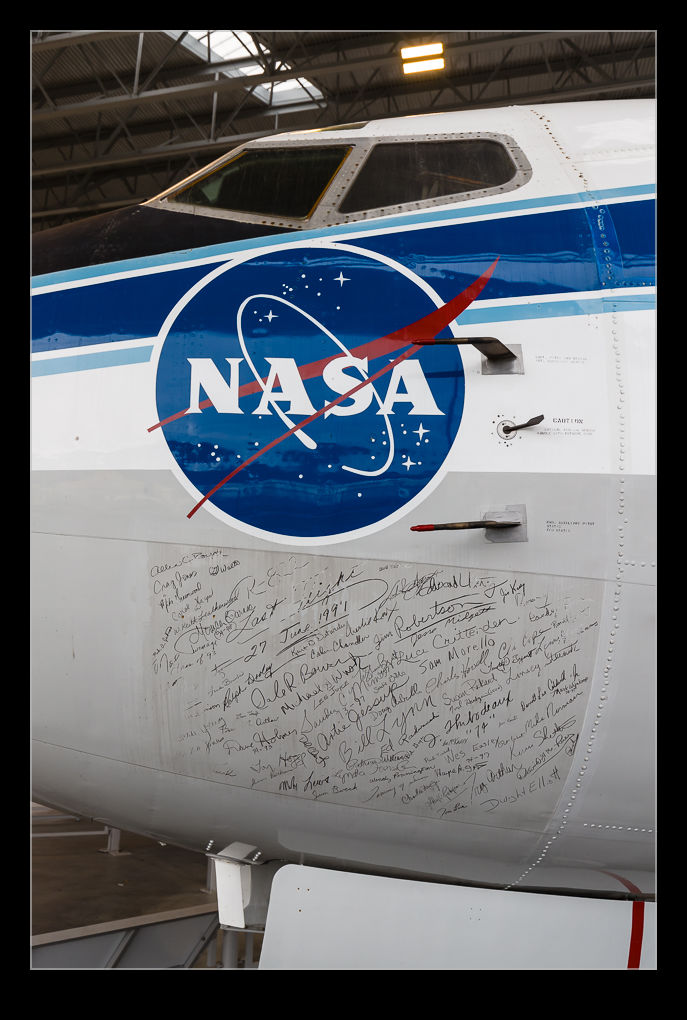 The 737 fuselage is closely tied to the previous generations of Boeing jets like the 707 and 727. It inherited the eyebrow windows above the main cockpit windows. These days, the controlled airspace has made the need for these while maneuvering a lot less. Current jets are built without them and many airlines have reduced maintenance costs by plugging them. I had assumed that they had gone away for most operators. Apparently not for Alaska! Walking through the terminal, I saw one jet with the eyebrows and was surprised. However, then I saw a bunch more so clearly this is still something Alaska see as valuable.
The 737 fuselage is closely tied to the previous generations of Boeing jets like the 707 and 727. It inherited the eyebrow windows above the main cockpit windows. These days, the controlled airspace has made the need for these while maneuvering a lot less. Current jets are built without them and many airlines have reduced maintenance costs by plugging them. I had assumed that they had gone away for most operators. Apparently not for Alaska! Walking through the terminal, I saw one jet with the eyebrows and was surprised. However, then I saw a bunch more so clearly this is still something Alaska see as valuable.
Category Archives: civil
Japanese Government Comes to Town
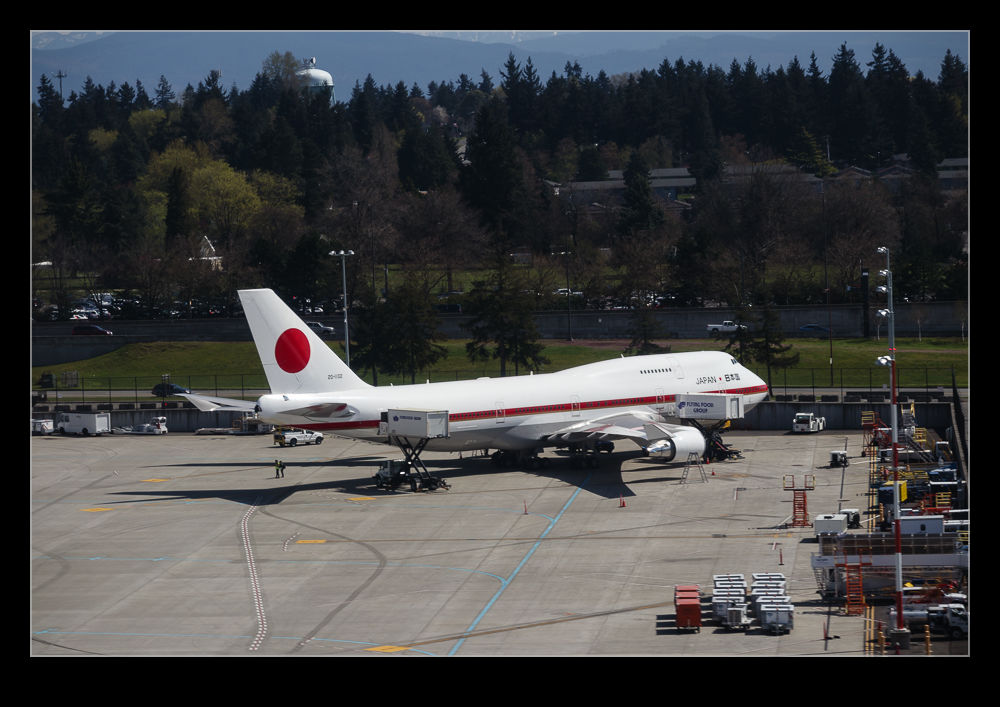 I was sitting at the gate waiting to board a flight when the sound of a heavy jet reversing thrust outside caught my attention. It was a Japanese 747-400. JAL retired their 747s a few years ago and that made an appearance on the blog here. That meant this was a Japanese Government 747. I was really annoyed to have only seen it at the last minute. However, I was on the right side of the plane on takeoff to try and get a look. I did get a shot but looking through the camera made me lose the wider view. The Japanese 747s tend to travel as a pair. Sure enough, a second jet was parked up and I didn’t spot it was there until too late.
I was sitting at the gate waiting to board a flight when the sound of a heavy jet reversing thrust outside caught my attention. It was a Japanese 747-400. JAL retired their 747s a few years ago and that made an appearance on the blog here. That meant this was a Japanese Government 747. I was really annoyed to have only seen it at the last minute. However, I was on the right side of the plane on takeoff to try and get a look. I did get a shot but looking through the camera made me lose the wider view. The Japanese 747s tend to travel as a pair. Sure enough, a second jet was parked up and I didn’t spot it was there until too late.
Aer Lingus 757 at Newark
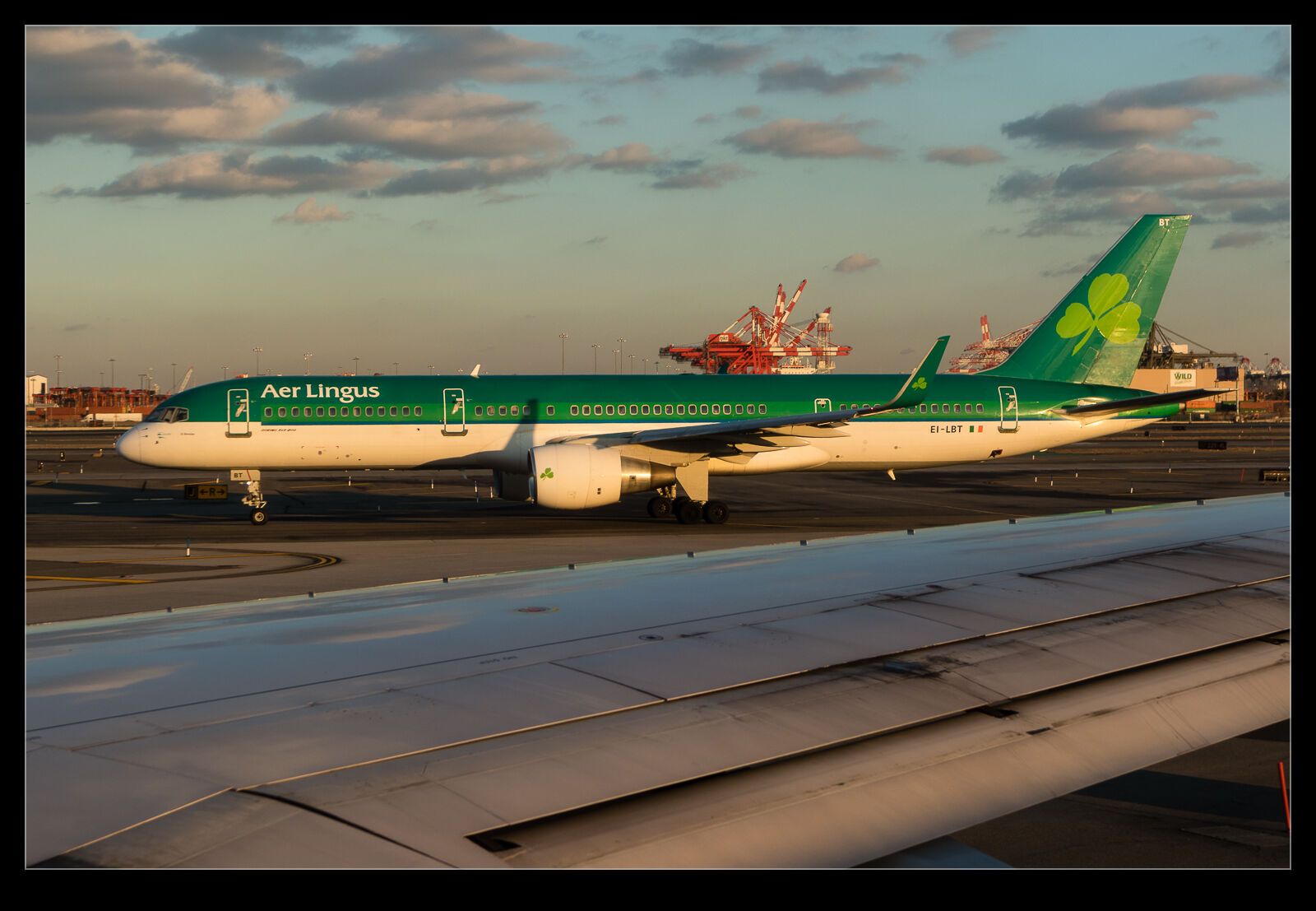 In the UK, I have seen plenty of Aer Lingus A320 family jets. In the Midwest and on the west coast I have seen their A330s a lot too. One type of theirs that I have not seen before is the 757. These seem to be used for the shorter transatlantic runs. While taxiing out at Newark for a flight back to Seattle, a Shamrock 757 taxied out too and departed ahead of us. I have to admit I was quite surprised. I guess I knew they had 757s but this was the first one I had seen.
In the UK, I have seen plenty of Aer Lingus A320 family jets. In the Midwest and on the west coast I have seen their A330s a lot too. One type of theirs that I have not seen before is the 757. These seem to be used for the shorter transatlantic runs. While taxiing out at Newark for a flight back to Seattle, a Shamrock 757 taxied out too and departed ahead of us. I have to admit I was quite surprised. I guess I knew they had 757s but this was the first one I had seen.
Ice Emphasis to Structure of the A330
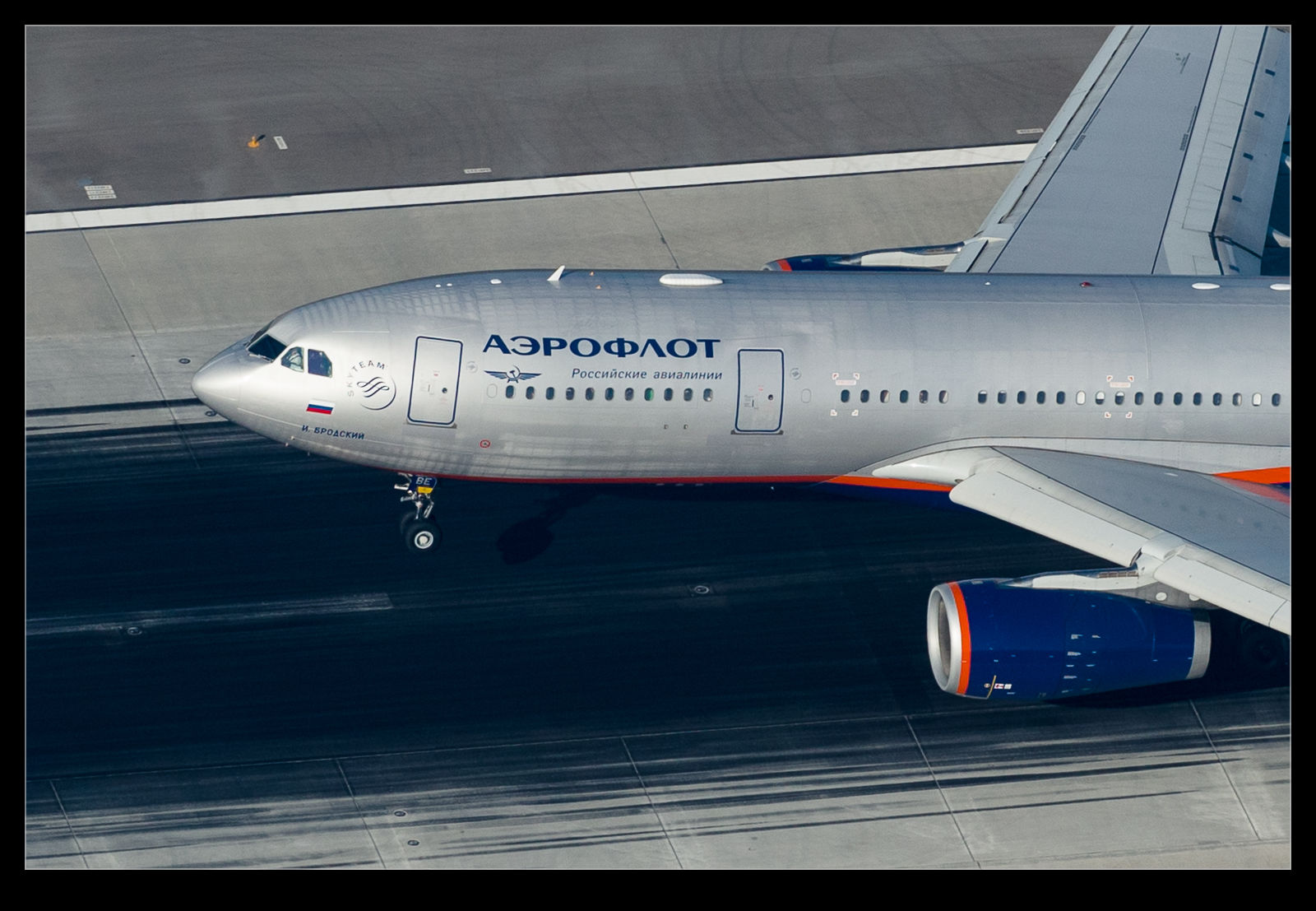 An Aeroflot Airbus A330 landed at LAX while I was shooting there. On plenty of occasions, I have seen ice on the underside of the wings of landing aircraft where the cold fuel remaining in the tanks has caused condensation and freezing in the warmer damp air lower down. However, I haven’t ever noticed it on the fuselage structure. On this jet, though, I could see ice on the surface and the patterns of ice reflected the underlying fuselage structure. Maybe this is there more often and it was just the paint finish that made it show up this time.
An Aeroflot Airbus A330 landed at LAX while I was shooting there. On plenty of occasions, I have seen ice on the underside of the wings of landing aircraft where the cold fuel remaining in the tanks has caused condensation and freezing in the warmer damp air lower down. However, I haven’t ever noticed it on the fuselage structure. On this jet, though, I could see ice on the surface and the patterns of ice reflected the underlying fuselage structure. Maybe this is there more often and it was just the paint finish that made it show up this time.
Max7 Test Aircraft
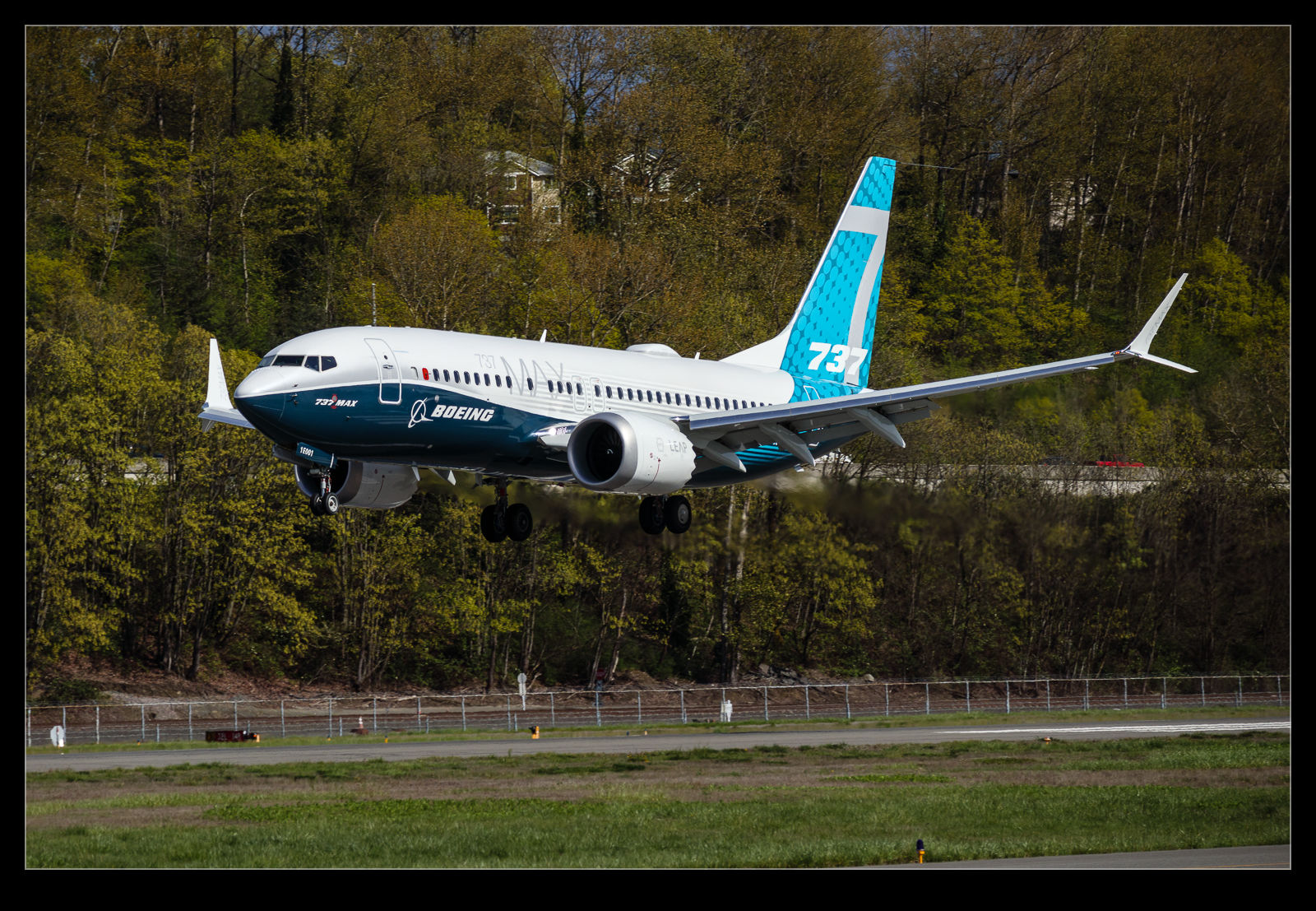 The 737 Max8 and Max9 Jets are both certificated and in service. Next to come along is the Max7. It is a lower priority as a result of a far lower level of orders combined with a redesign it underwent to make it larger than originally intended. It is now flying though. I saw one aircraft on the ramp at Renton when passing by and also saw the first test aircraft landing at Boeing Field. I actually saw it take off as I drove in to the city heading to a meeting and it returned at the end of the day. Neither the Max7 nor the A319neo has sold well so it will be interesting to see how many of these enter service.
The 737 Max8 and Max9 Jets are both certificated and in service. Next to come along is the Max7. It is a lower priority as a result of a far lower level of orders combined with a redesign it underwent to make it larger than originally intended. It is now flying though. I saw one aircraft on the ramp at Renton when passing by and also saw the first test aircraft landing at Boeing Field. I actually saw it take off as I drove in to the city heading to a meeting and it returned at the end of the day. Neither the Max7 nor the A319neo has sold well so it will be interesting to see how many of these enter service.
Smoking the Nosewheel of the A380
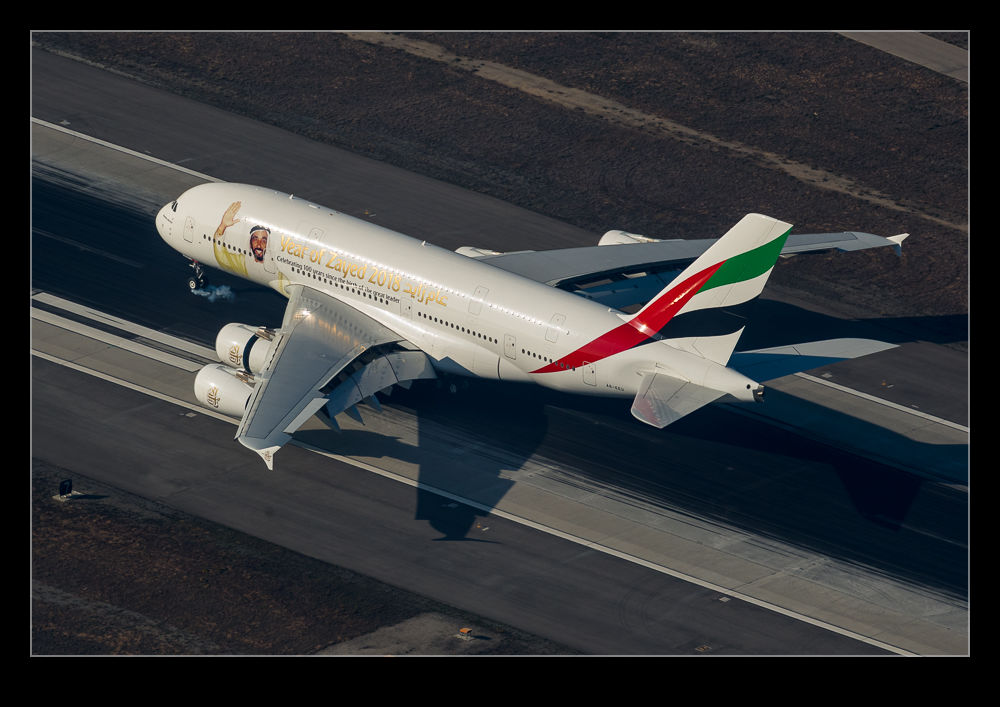 Touchdown of an airliner almost always results in a big cloud of smoke as the rubber burns off the tires when they spin up to speed after first contacting the runway. Lots of tires can mean even more smoke and the 20 main tires on an A380 should mean a lot of smoke. Less often noticed is that the same thing happens when the nose gear touches down. As I shot this A380 landing at LAX, I happened to catch the smoke from the nose gear as it hit the ground.
Touchdown of an airliner almost always results in a big cloud of smoke as the rubber burns off the tires when they spin up to speed after first contacting the runway. Lots of tires can mean even more smoke and the 20 main tires on an A380 should mean a lot of smoke. Less often noticed is that the same thing happens when the nose gear touches down. As I shot this A380 landing at LAX, I happened to catch the smoke from the nose gear as it hit the ground.
El Al 777 Overwing Vortex on Takeoff
 Engine nacelles are optimized for cruise performance. At high angles of attack, their shape results in some rather awkward flow properties which can influence the wing performance above and behind them. In order to control things, you will see small vanes attached to one or both sides of the nacelle that generate a vortex that stabilizes the flow somewhat. As an aircraft rotates at takeoff, the strength of this vortex increases and it will often become visible as moisture in the air condenses within in. This vortex will stream back up and over the leading edge of the wing.
Engine nacelles are optimized for cruise performance. At high angles of attack, their shape results in some rather awkward flow properties which can influence the wing performance above and behind them. In order to control things, you will see small vanes attached to one or both sides of the nacelle that generate a vortex that stabilizes the flow somewhat. As an aircraft rotates at takeoff, the strength of this vortex increases and it will often become visible as moisture in the air condenses within in. This vortex will stream back up and over the leading edge of the wing.
When you are inside the aircraft, this is pretty easy to see provided the conditions are right. From head on or aft they are also quite conspicuous. It isn’t often that you get a good view from above. When I was flying over LAX in the helicopter, the aircraft departing from the north complex had better light on them. However, the runways are offset so the rotation point is further west and beyond the area in which we are allowed to fly. However, you can get a view from above and behind as the jets get airborne. An El Al 777 took off while I was up and I managed to get some shots of it as it rotated and climbed away and the vortices were clear to see as the angle of attack increased.
Gulfstream from Above
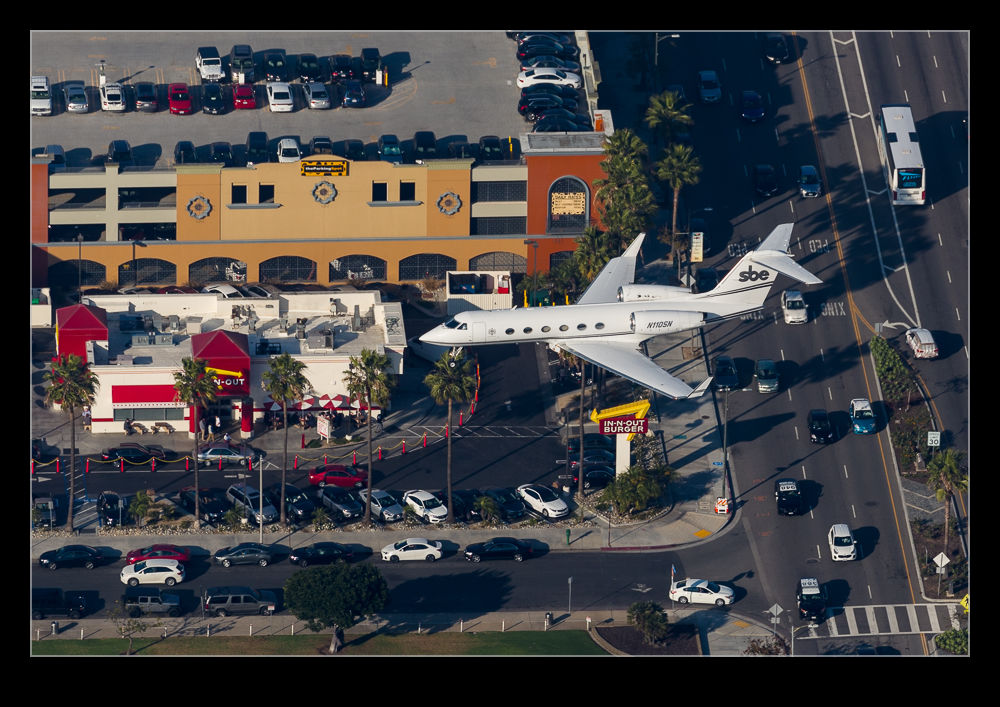 Getting the airliners coming in to LAX was what I was aiming for but I was pleased to get a bizjet bonus. A Gulfstream made an approach to the northerly runway complex. This was a surprise to me as the facilities for corporate aviation are on the south side of the airport so an approach over there would seem to have made more sense. As with some other arrivals, I wasn’t complaining. An aerial shot of a Gulfstream was very welcome.
Getting the airliners coming in to LAX was what I was aiming for but I was pleased to get a bizjet bonus. A Gulfstream made an approach to the northerly runway complex. This was a surprise to me as the facilities for corporate aviation are on the south side of the airport so an approach over there would seem to have made more sense. As with some other arrivals, I wasn’t complaining. An aerial shot of a Gulfstream was very welcome.
NASA’s DC-8 Is Watching Me
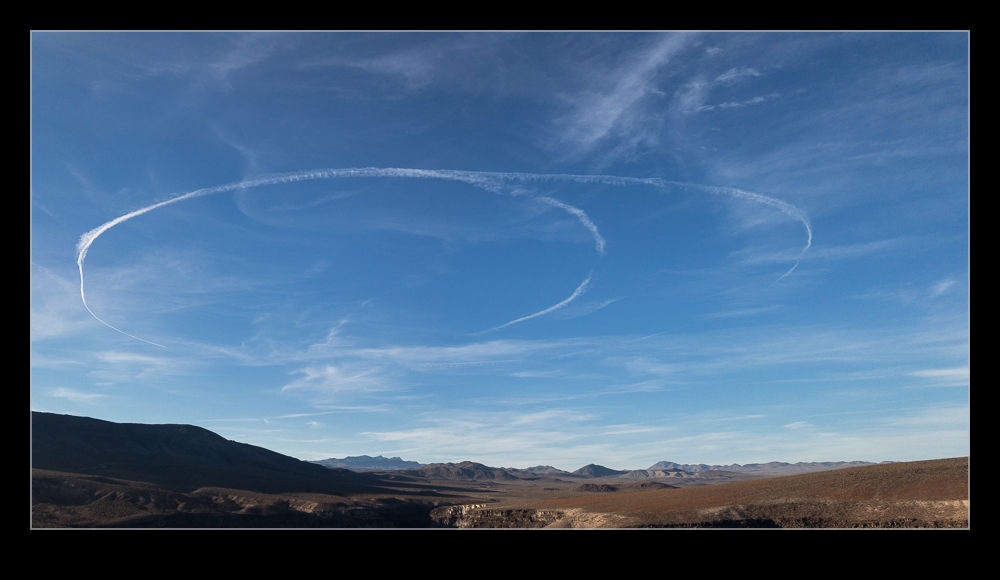 While hanging out at Rainbow Canyon awaiting the next jet, someone was flying high above. They were pulling a contrail at their altitude so you had a really good idea of their flightpath. They were flying regular extended orbits above us. The racetracks they left in the sky made it all pretty simple. A look at an ADS-B tracker told me that this wasn’t a tanker waiting for trade. It was NASA’s DC-8. This is a rare beast indeed and, while still a long way off, I was glad to get a shot of some sort of it.
While hanging out at Rainbow Canyon awaiting the next jet, someone was flying high above. They were pulling a contrail at their altitude so you had a really good idea of their flightpath. They were flying regular extended orbits above us. The racetracks they left in the sky made it all pretty simple. A look at an ADS-B tracker told me that this wasn’t a tanker waiting for trade. It was NASA’s DC-8. This is a rare beast indeed and, while still a long way off, I was glad to get a shot of some sort of it.
The First 737
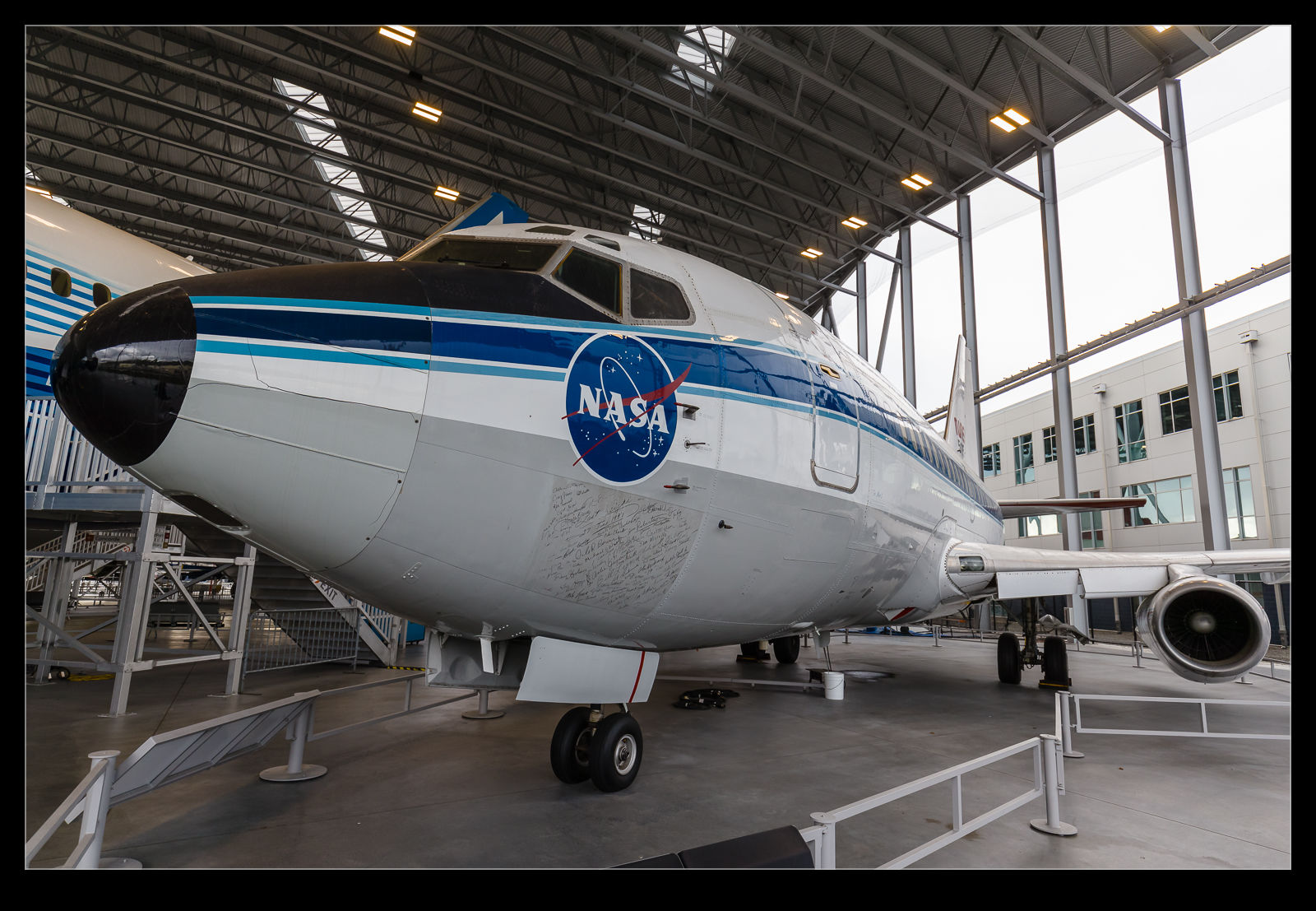 The Museum of Flight has a number of prototypes of Boeing airliners. They have the first Boeing 737. This is a 737-100. Very few of these were built with the 200 series being introduced soon and then taking over completely until the introduction of the 300 series many years later. (For those of us of a certain age, the 200 series was known as the Classic once the 300/400/500s came into service. Today they are often called Classic when compared to the NG models which are, themselves, now being superseded by the Max.)
The Museum of Flight has a number of prototypes of Boeing airliners. They have the first Boeing 737. This is a 737-100. Very few of these were built with the 200 series being introduced soon and then taking over completely until the introduction of the 300 series many years later. (For those of us of a certain age, the 200 series was known as the Classic once the 300/400/500s came into service. Today they are often called Classic when compared to the NG models which are, themselves, now being superseded by the Max.)
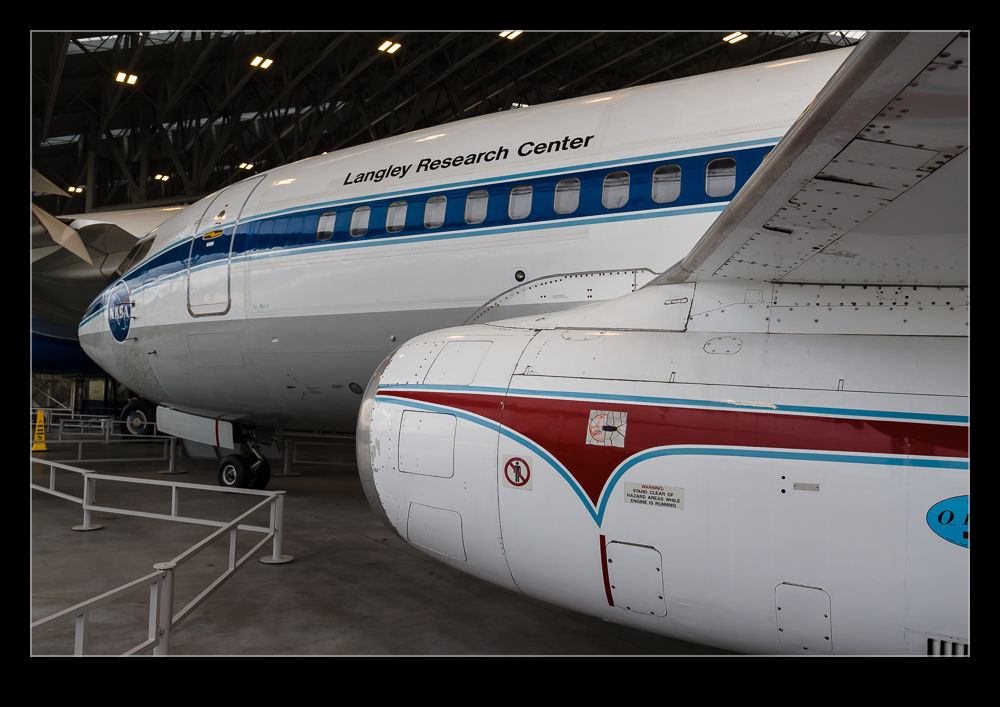 The first airframe ended up with NASA being used for testing duties of all types. At the end of its testing career with NASA, it made its way back to Boeing Field and to the Museum of Flight’s outside collection. These are now under cover with a roof having been built over the many aircraft. The 200 series is a pretty short jet but the 100 is even more so. It is quite something to see this aircraft and compare it to the big aircraft that are now the staple of Boeing’s output. The Max 10 will be nearly 50% longer than the original.
The first airframe ended up with NASA being used for testing duties of all types. At the end of its testing career with NASA, it made its way back to Boeing Field and to the Museum of Flight’s outside collection. These are now under cover with a roof having been built over the many aircraft. The 200 series is a pretty short jet but the 100 is even more so. It is quite something to see this aircraft and compare it to the big aircraft that are now the staple of Boeing’s output. The Max 10 will be nearly 50% longer than the original.
The aircraft is displayed in its NASA colors rather than the original in-house colors when it was first built. Also, since NASA used it for a variety of odd tests, it has a bunch of additions from those test activities. Since it is parked in amongst the 787 and 747 test aircraft and is kept at the far end of the space, it is a little lost I feel. However, when you contemplate its place in the history of airliner development, it really is a very significant plane. There was a time when Boeing contemplated selling the whole program. How different things could have been!
